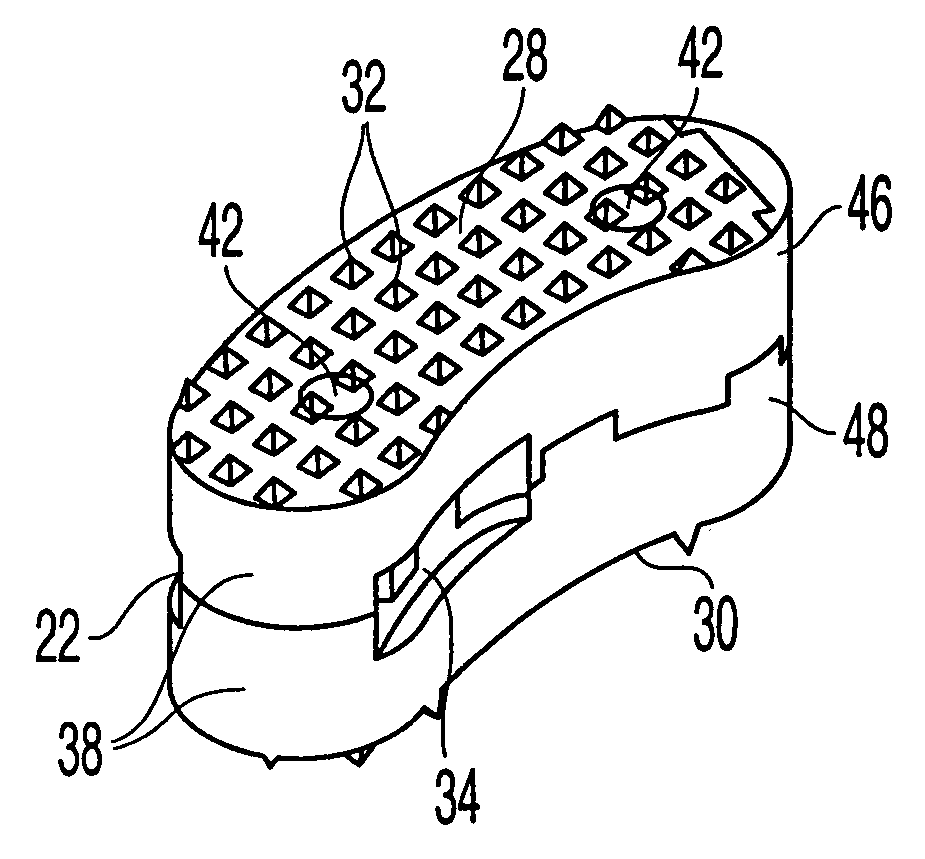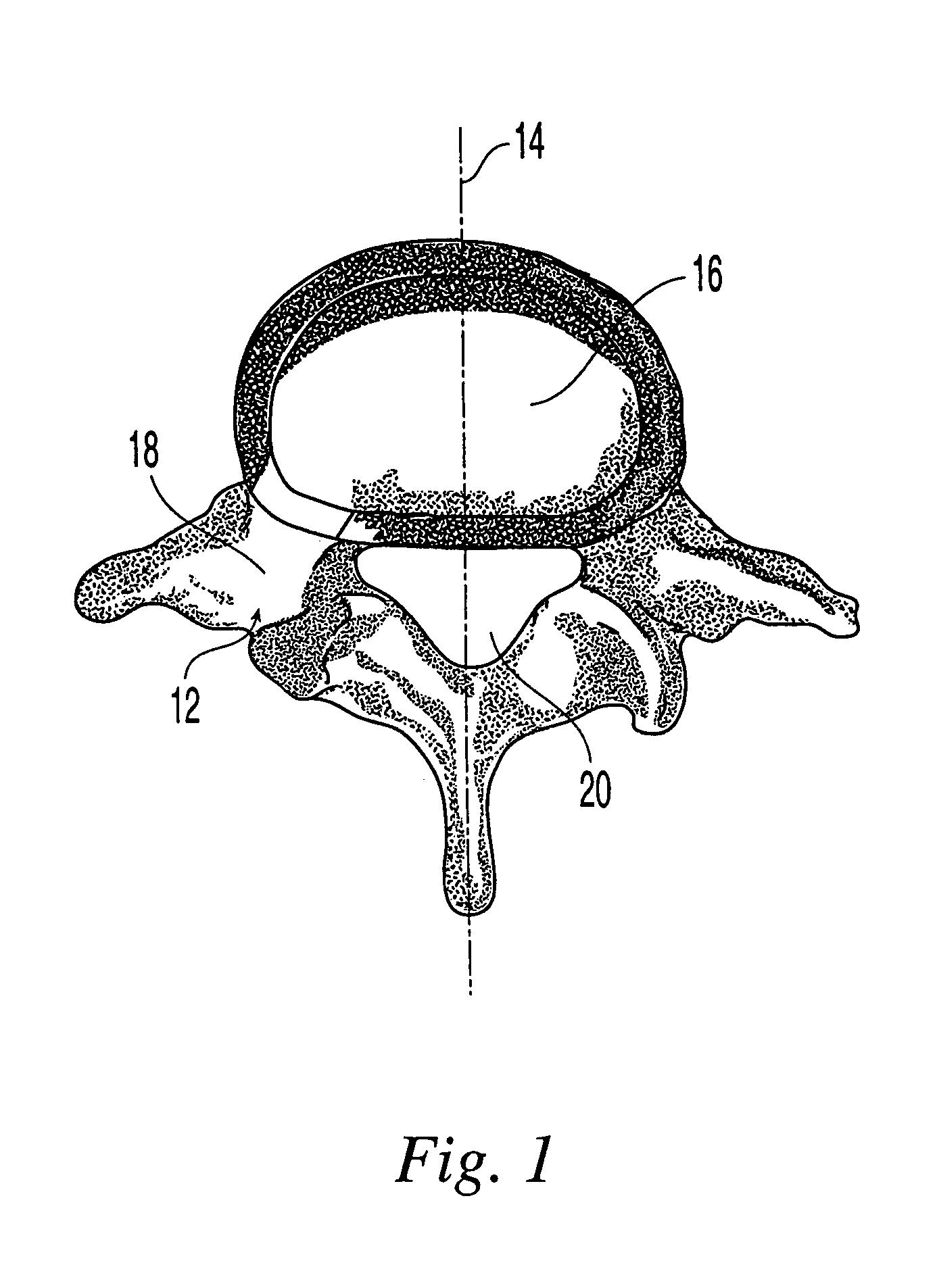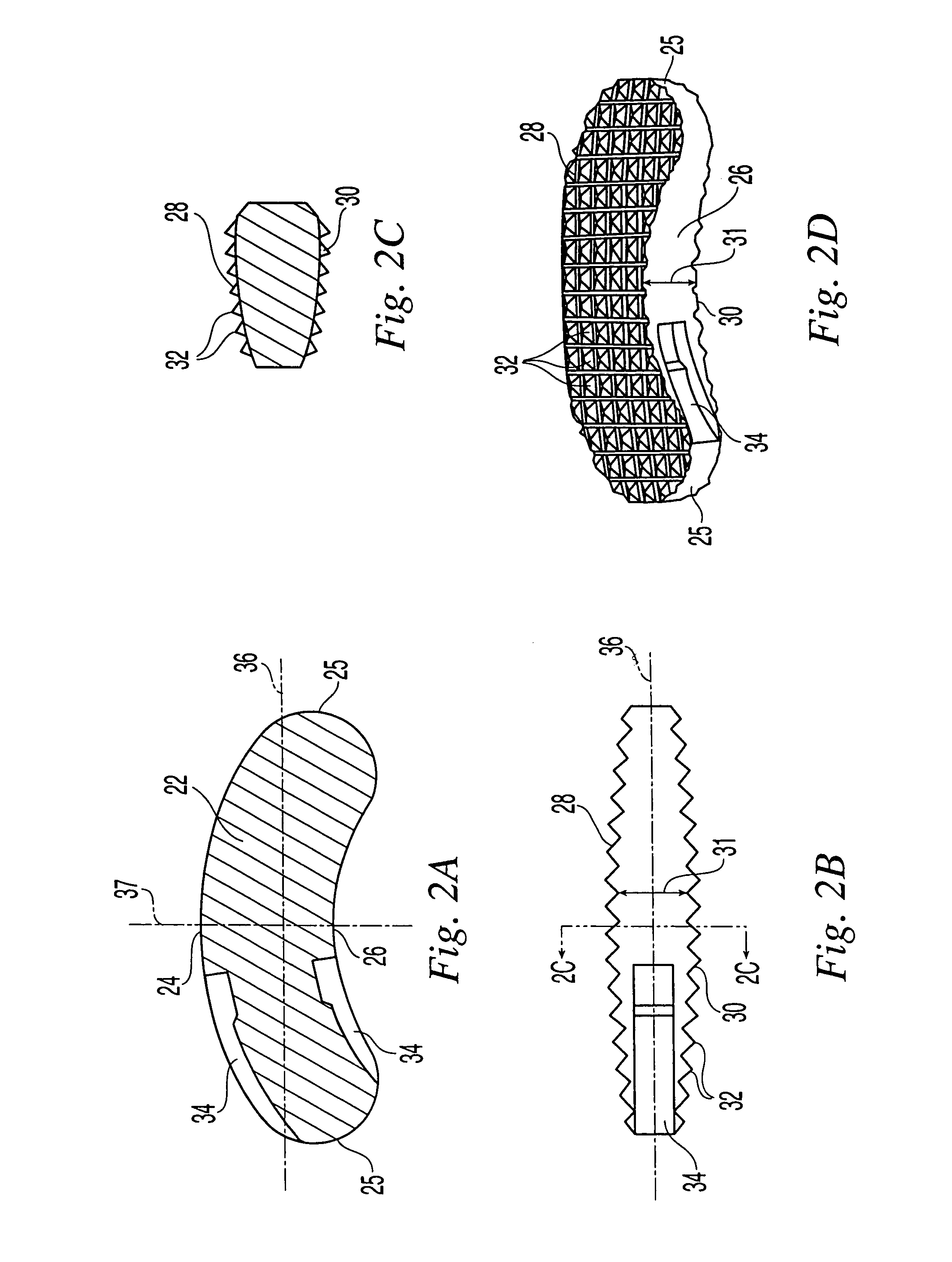Method of performing a transforaminal posterior lumber interbody fusion procedure
- Summary
- Abstract
- Description
- Claims
- Application Information
AI Technical Summary
Benefits of technology
Problems solved by technology
Method used
Image
Examples
Embodiment Construction
[0040]An implant according to the present invention, referred to herein as a transforaminal posterior lumbar interbody fusion implant (“T-PLIF implant”), is designed for use as an intervertebral spacer in spinal fusion surgery, where an affected disk is removed from between two adjacent vertebrae and replaced with an implant that provides segmental stability and allows for bone to grow between the two vertebrae to bridge the gap created by disk removal. Specifically, the T-PLIF implant is designed for the transforaminal lumbar interbody fusion (T-PLIF) technique, which, as shown in FIG. 1, involves a posterior approach 12, offset from the midline 14 of the spine, to the affected intervertebral disk space 16. The window 18 available for implant insertion using the T-PLIF technique is limited laterally by the dura 20 and the superior exiting nerve root (not shown).
[0041]As shown in FIGS. 2A through 2D, in a preferred embodiment, the T-PLIF implant has an arcuate, “rocker-like” body 22...
PUM
 Login to View More
Login to View More Abstract
Description
Claims
Application Information
 Login to View More
Login to View More - R&D
- Intellectual Property
- Life Sciences
- Materials
- Tech Scout
- Unparalleled Data Quality
- Higher Quality Content
- 60% Fewer Hallucinations
Browse by: Latest US Patents, China's latest patents, Technical Efficacy Thesaurus, Application Domain, Technology Topic, Popular Technical Reports.
© 2025 PatSnap. All rights reserved.Legal|Privacy policy|Modern Slavery Act Transparency Statement|Sitemap|About US| Contact US: help@patsnap.com



